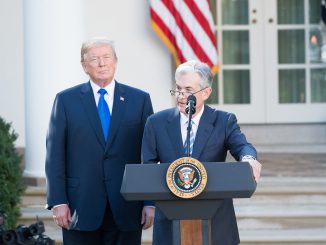The minutes of the June FOMC meeting are out, and they did not deliver the much-anticipated smoking gun that would indicate QE3 was on its way. In fact, I think the minutes raise questions about another round of QE3 at all. The minutes hold many hints that policymakers are struggling to find a new direction for policy, one not necessarily dependent on balance sheet expansion.
There will be considerable focus on this section:
A few members expressed the view that further policy stimulus likely would be necessary to promote satisfactory growth in employment and to ensure that the inflation rate would be at the Committee’s goal. Several others noted that additional policy action could be warranted if the economic recovery were to lose momentum, if the downside risks to the forecast became sufficiently pronounced, or if inflation seemed likely to run persistently below the Committee’s longer-run objective.
We already knew that there exists a contingent seeking additional stimulus. And we suspected that there was a sizable middle ground that could be turned to the cause of additional stimulus. But the conditions that they place on further action – lost momentum, downside risks, or low inflation – all seemed to have been met at the last meeting. Indeed, the inflation clause is especially curious because the minutes earlier noted:
Looking beyond the temporary effects on inflation of this year’s fluctuations in oil and other commodity prices, almost all participants continued to anticipate that inflation over the medium-term would run at or below the 2 percent rate that the Committee judges to be most consistent with its statutory mandate.
If everyone agrees they are going to miss their target, and everyone agrees that missing the target should be cause for action, then why was action limited to simply maintaining the status quo? (See also Matthew Yglesias). I can find two reasons in the minutes to withhold more aggressive action at this time. First is uncertainty about the inflation forecast:
Most participants viewed the risks to their inflation outlook as being roughly balanced.
Maybe they need most participants to view the risks as skewed toward even lower inflation. Another possibility is that officials simply are wary about the impact of further quantitative easing at this juncture and do not want to take action that does more harm than good. And how might it do such harm?
Some members noted the risk that continued purchases of longer-term Treasury securities could, at some point, lead to deterioration in the functioning of the Treasury securities market that could undermine the intended effects of the policy. However, members generally agreed that such risks seemed low at present, and were outweighed by the expected benefits of the action.
And this:
A few members observed that it would be helpful to have a better understanding of how large the Federal Reserve’s asset purchases would have to be to cause a meaningful deterioration in securities market functioning, and of the potential costs of such deterioration for the economy as a whole.
And finally, perhaps most importantly, this:
Several participants commented that it would be desirable to explore the possibility of developing new tools to promote more-accommodative financial conditions and thereby support a stronger economic recovery.
I noted after the last meeting that the “further action” clause of the statement did not specify balance sheet operations as had previous statements. This possibly signaled that the next round of easing could come in a different form. What form I do not know; I would think MBS, but that would also act via the balance sheet. Similarly, we saw comments from Fed officials that further action could come in the form of communications, presumably with respect to the forward guidance.
Bottom Line: The minutes leaves me with the sense that it isn’t so much the outlook that is holding back the Fed from further stimulus, but a lack of faith in the beneficial effects of further quantitative easing. That lack of faith may be why the bar to QE3 seems so high. So high that Fed officials are searching for other tools as the next step. Until I see more specific suggestions of other tools, I would continue to expect QE as the tool of choice. Given concerns about the functioning of the Treasuries market, MBS would seem a suitable alternative. But a building desire to explore new tools could mean a delay in any additional action. Hopefully Fed officials will give us more guidance on specific alternatives in the weeks ahead.
Disclaimer: This page contains affiliate links. If you choose to make a purchase after clicking a link, we may receive a commission at no additional cost to you. Thank you for your support!




Leave a Reply